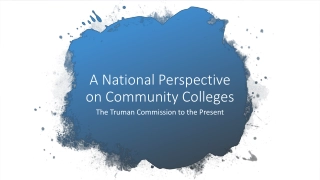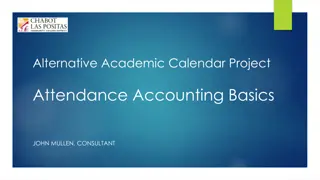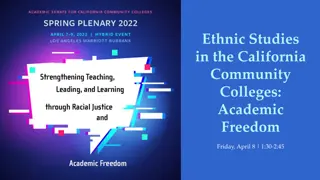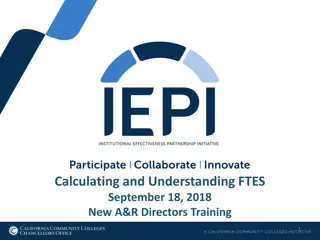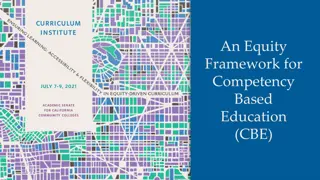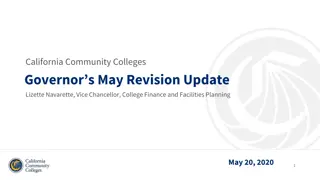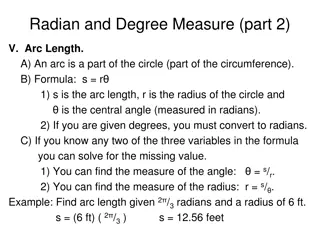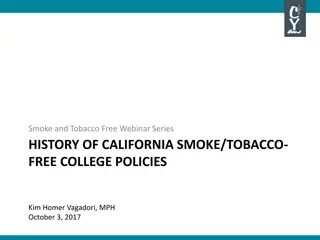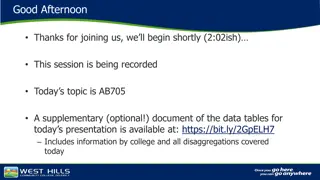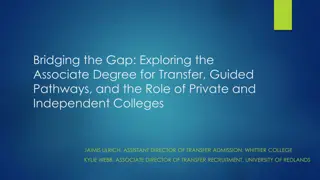Understanding Area of Emphasis Degrees in California Community Colleges
Learn about the significance of area of emphasis degrees in supporting student success and telling colleges' stories of achievement within the California Community College system. Discover the distinctions between area of emphasis degrees and majors, explore related disciplines criteria, and understand who determines the relevance of courses in these specialized programs.
Download Presentation

Please find below an Image/Link to download the presentation.
The content on the website is provided AS IS for your information and personal use only. It may not be sold, licensed, or shared on other websites without obtaining consent from the author. Download presentation by click this link. If you encounter any issues during the download, it is possible that the publisher has removed the file from their server.
E N D
Presentation Transcript
AREA OF EMPHASIS Presented by Raul Arambula, Chancellor s Office Nili Kirschner, Woodland Community College Aimee Tran, ASCCC Curriculum Committee, Saddleback College
With the California Community College system increasingly focused on student degree completion and transfer as a metric to assess a college s overall performance, the area of emphasis degree plays an important role in supporting students to achieve a goal of completing an associates degree while helping colleges tell their story of student success. FAQs are provided to clarify the parameters around area of emphasis degrees as defined in title 5 55063.
HOW IS AN AREA OF EMPHASIS DEGREE DIFFERENT THAN A MAJOR? A major must consist of a minimum of 18 semester units of required courses or restricted electives and must serve to prepare a student for employment or transfer in a specific area of study Examples: Associate of Arts in Psychology, Associate of Science in Landscape Architecture An area of emphasis is courses that are considered to be in related disciplines that share commonalities under a broader scope of related subjects or topics Example: an Associate of Arts in Liberal Arts - Emphasis in Social and Behavioral Sciences might include sociology, psychology, Mexican-American studies, and history courses
WHAT ARE RELATED DISCIPLINES? Courses can be included together in an area of emphasis if they are either: courses in the same GE area, or courses defined by a local process to be related Curriculum committee may define criteria for related disciplines and document in its local process and in narrative/supporting docs sent to the Chancellor s Office.
WHO DECIDES IF COURSES ARE RELATED? For traditional or local associate degrees, local curriculum committees with purview and responsibility for approving programs must review an area of emphasis degree to ensure that courses in the program either: fall within the same GE areas defined by title 5 55063, or meet locally defined and documented criteria Process is different for ADTs
WHAT IS THE DIFFERENCE BETWEEN AN ADT AREA OF EMPHASIS DEGREE & LOCAL AREA OF EMPHASIS DEGREE? Both are based on an area of emphasis; however, Associate Degrees for Transfer (ADTs) are based on Transfer Model Curriculum (TMC) that are vetted by Faculty Discipline Review Group (FDRG). Unlike local area of emphasis degrees, there is no further need to justify the inclusion of courses as related disciplines; the TMC template includes its own documentation requirements.
HOW ARE GENERAL EDUCATION AREAS DEFINED? Title 5 55063 defines general education (GE) areas: Natural Sciences Social and Behavioral Sciences Humanities Language and Rationality Courses are placed in the general education pattern for a college s local associate degree by the curriculum committee.
CAN A COURSE BE PLACED IN MORE THAN ONE GENERAL EDUCATION AREA? Yes, a course may be placed in more than one general education area. Course can then be included in multiple areas of emphasis Example: Ethnic studies course may be placed in GE areas for both Humanities and Social Science, and be included in area of emphasis degrees for each.
CAN AN AREA OF EMPHASIS DEGREE USE COURSES THAT ARE INCLUDED IN GENERAL EDUCATION AREAS FOR CSU BREADTH OR IGETC RATHER THAN IN TITLE 5 55063? Colleges may decide locally to create an area of emphasis degree based on courses that appear in the general education areas of CSU Breadth or IGETC.
CAN AN AREA OF EMPHASIS DEGREE BE CREATED USING AREA E OF THE CSU BREADTH? An area of emphasis degree created in an area of general education not found in title 5 55063 (such as the Area E in CSU) would not meet the requirements for courses in related disciplines even though they are identified in the same CSU general education area. However, faculty might consider creating the degree if they can document that the degree serves to prepare a student for employment or transfer in a specific area of study.
CAN AN ENTIRE GENERAL EDUCATION PATTERN (LOCAL AA, IGETC, CSU) BE USED AS AN AREA OF EMPHASIS DEGREE? No PCAH p.80 says: GE transfer patterns do not satisfy the requirement for a major or an area of emphasis. In other words, an associate degree cannot consist solely of CSU GE-Breadth (CSU GE-Breadth), IGETC, or the local GE pattern with the remaining units (to reach 60 semester or 90 quarter) in other GE courses or electives, selected at the student's discretion.
WHAT SUPPORTING DOCUMENTATION IS NEEDED IN COCI FOR AN AREA OF EMPHASIS DEGREE? For local degrees, supporting documentation is defined by the goal of the program. Include supporting documentation for the goal types as outlined in the latest edition of the PCAH, in section 4 entitled Local Degrees: AA and AS.* In addition to the requirements stated in the PCAH, it is helpful for the Chancellor s Office staff and recommended to include in the program narrative the curriculum committee s rationale for determining related disciplines. For ADTs, include TMC template and any documentation specified on template. *If program is in a CTE TOP Code, include supporting documents required for CTE.
WHICH PROGRAM GOAL SHOULD BE SELECTED TO INDICATE AN AREA OF EMPHASIS DEGREE IN THE CHANCELLOR S OFFICE CURRICULUM INVENTORY (COCI)? For AA/AS select Local (or CTE if in a CTE TOP code) For ADTS select Transfer An Area of Emphasis degree may be intended to prepare students for transfer, but the "Transfer" goal is reserved for ADTs and Transfer GE Pattern Certificates of Achievement. If the local degree is designed to prepare students for transfer and this is mentioned in the narrative, you will need to select the local goal and also submit transfer documentation as outlined in PCAH.
ARE THERE GUIDELINES FOR THE NUMBER OF COURSES TO INCLUDE IN AN AREA OF EMPHASIS? No, however, every course outline of record must be attached when a program is uploaded to COCI. Local curriculum committees should determine their own criteria if they decide a limit on the number of courses listed as options is desired.
CAN AN AREA OF EMPHASIS DEGREE INCLUDE A LIST OF REQUIRED CORE PROGRAM COURSES? Yes, if the faculty and curriculum committee conclude that the preparation students need for transfer must include a specific education experience to support their restricted electives in the program.
POSSIBLE SOCIAL JUSTICE ADTS Top Code Title CIP 2201.30 Social Justice: General 05.0299 2201.40 Social Justice: LGTBQ Studies 05.0203 2201.50 Social Justice: Ethnic Studies 05.0200 2201.60 Social Justice: Chicano Studies 05.0208 2201.70 Social Justice: Gender Studies 05.0207 2201.80 Social Justice: African American Studies 05.0201 2201.90 Social Justice: Asian American Studies 05.0206 2201.91 Social Justice: Native American Studies 05.0202


